
Teaching Strategies for Life
The purpose of the Teaching Strategies for Life component is to develop and provide a comprehensive archive of open source and free-shared teaching strategies that are:
- Available to everyone
- Adaptable to almost any curriculum
- Part of a global collaboration of indefinite evolution and expansion (add your ideas here)
- Used within the Education for Life Program to teach the Curriculum for Life Component
Combining these strategies with the Curriculum for Life component and the Learning Tools and Toys for Life components can be used to generate endless Lesson Plans for Life in relation to any subject or topic to be learned.
This page includes the following sections:
- What are “Teaching Strategies for Life”
- Why Use these Teaching Strategies Section
- Ever-expanding Teaching Strategies for Life List
- Frequently Answered Questions
- Related Resources
RELATED PAGES
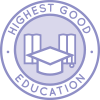
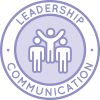
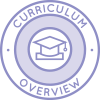
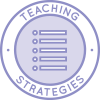
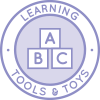
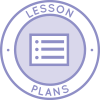
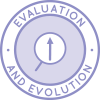
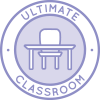
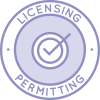

WAYS TO CONTRIBUTE TO EVOLVING THIS EDUCATION PROGRAM WITH US
SUGGESTIONS | CONSULTING | MEMBERSHIP | OTHER OPTIONS
WHAT ARE
“TEACHING STRATEGIES FOR LIFE”
 Teaching strategies for life are techniques that can be used by students to solidify their grasp on a particular subject matter using customized traditional and non-traditional modalities through divergent thinking to reinforce the information being learned. These teaching strategies can also be used by teachers to teach content in creative ways. The styles, strategies, and approaches we are outlining are for both the comprehensive Education for Life Program and as part of the One Community Social Architecture (outlined here). To create this, we have started with components from the philosophies of the well known alternative teaching methods of Maria Montessori, Waldorf, Carl Orff Schulwerk, Reggio Emilia Approach, Howard Gardner’s 8 Multiple-Intelligences, and Bloom’s Taxonomy and then expanded beyond them. The teaching styles outlined here are meant to be adaptable and applicable for adults teaching children, adults teaching adults, children teaching children, and children teaching adults.
Teaching strategies for life are techniques that can be used by students to solidify their grasp on a particular subject matter using customized traditional and non-traditional modalities through divergent thinking to reinforce the information being learned. These teaching strategies can also be used by teachers to teach content in creative ways. The styles, strategies, and approaches we are outlining are for both the comprehensive Education for Life Program and as part of the One Community Social Architecture (outlined here). To create this, we have started with components from the philosophies of the well known alternative teaching methods of Maria Montessori, Waldorf, Carl Orff Schulwerk, Reggio Emilia Approach, Howard Gardner’s 8 Multiple-Intelligences, and Bloom’s Taxonomy and then expanded beyond them. The teaching styles outlined here are meant to be adaptable and applicable for adults teaching children, adults teaching adults, children teaching children, and children teaching adults.
WHY USE THESE TEACHING STRATEGIES
 Using these teaching strategies allows flexibility for different learning styles, stimulates out-of-the-box thinking and promotes deeper learning through multidisciplinary exploration. The strategies do this while making learning fun, interesting, and meaningful for everyone involved. In addition, this approach keeps creativity and wonder alive through the use of divergent thinking, which is a thought process that promotes the exploration of many possible outcomes. This process caters to helping Teachers and Learners become “unstuck” so the learning process can continue. Additionally, when Learners are given real world applications, the subject matter is more appreciated, meaningful, and more easily retained by the Learner. Most importantly, this approach infuses the learning experience with the very modalities that each student is excelling in and passionate about.
Using these teaching strategies allows flexibility for different learning styles, stimulates out-of-the-box thinking and promotes deeper learning through multidisciplinary exploration. The strategies do this while making learning fun, interesting, and meaningful for everyone involved. In addition, this approach keeps creativity and wonder alive through the use of divergent thinking, which is a thought process that promotes the exploration of many possible outcomes. This process caters to helping Teachers and Learners become “unstuck” so the learning process can continue. Additionally, when Learners are given real world applications, the subject matter is more appreciated, meaningful, and more easily retained by the Learner. Most importantly, this approach infuses the learning experience with the very modalities that each student is excelling in and passionate about.
SPECIFIC SYSTEMS AND THEIR CONTRIBUTIONS
Montessori | Waldorf | Orff | Reggio | Multi-Intelligence | Bloom’s Taxonomy | Study Tech
EVER-EXPANDING TEACHING STRATEGIES FOR LIFE LIST
This list is meant to expand indefinitely. If you have something you’d like to add to it, please visit our suggestions page.
- “Body Smart Exploration” – The use of manipulatives, physical exercise, and and other physical activities to “act out” or otherwise engage a combination (get creative) of curriculum topics that would not normally involve these things to “get it into your physical neurology.” (Idea source was Multi-Intelligences)
- “Crazy Creative Combo Cooperative” – Teach to another or give a presentation to interpret how a curriculum point or points, chapter of book, etc. was important using any one, or two, or more of these creative formats: Poem, Play/Act It Out, Essay or Bullet point, Picture, Song, Sculpture or Building, Computer Presentation, Origami or Tessellation (Ex.: 7 element tessellation), Cooking Project, Make Up Your Own, ??
- “Curious Copycat” – Leading a learning exercise with intent of learners “copycatting” a chosen leader and then asking and answering questions to deepen understanding. (Idea source was Waldorf)

- “Existential Smart Exploration” – Â “Presencing” with any curriculum – consider its history, meaning, and existence at every level in relation to you and everything else. Explain it’s relationship to some seemingly non-connected curriculum to teach both. (Idea source was Multi-Intelligences)
- “Freedom Learning” – Create an environment filled with as diverse as possible of a selection of imagination and curiosity stimulation learning materials revolving around your curriculum choice. Depending on the age of the learner, curriculum being taught, and the teaching aids, the idea to be learned can be collaborated on with the learner or not. An expansion on this idea is to have the learner(s) create their own Freedom Learning environment and explain/demonstrate how it works. (Idea source was Montessori)
- “Game Genius” – Design a new game to teach the curriculum. Select the specific strategy to teach the information, the number of players, a scoring system, and then choose and/or design a board or any other tools needed to help play the game. When it is complete, the game is played by learners and then discussed and/or collaborated on to evolve it further.
- “Heart of the Subject” – Expressive movement art to poetry, music, plays using learning and application of moods and emotional states combined with representative pitch, tone, rhythm, grammar, etc. to teach the emotional and artistic heart of a subject and/or component of curriculum. (Idea source was Waldorf and Multi-Intelligences)
- “Infinite Immersion” – Curriculum learned with maps, food, dance, song, stories, and history together – the goal is to gather the most diverse information possible about a topic and incorporate all the senses and learning styles for a full immersion experience. (Idea source was Montessori)
- “Leading expert” or “Become The Subject” – Example: History â Each child is assigned a piece (Ex. – Battle of Gettysburg) and becomes the expert on that piece. At the end of the week every learner would make a report on a different piece of the subject (which would be a different learner) and then present it to the rest of the class. To make it more fun and interactive, learners can dress up, act it out, transform the room into the environment to demonstrate their piece and engage the whole class in learning and problem solving. (Idea source was Waldorf )

- “Metaphor Magic” – Choose a well known story or statement about any curriculum component and explore this as a metaphor for life, a different curriculum component, and/or teaching tool. An example of this would be: Nutrition –> “treating your body as a temple” –> What does “a temple” mean to different people? Is this a good metaphor for each individual? What else could we use in place of “temple” and why? How could we use our ideas in other areas of our life/could this metaphor be a metaphor for other curriculum? Could we create a totally different metaphor for this curriculum based on other curriculum – ex. “body as a math equation, body as history, body as ????”?
- “Nature Smart” – Challenge learners to specifically and deeply engage some aspect of nature or the natural world in relation to the topic or topics being engaged. (Idea source was Multi-Intelligences)
- “Number/Reasoning Smart” – Use categorization and calculation to identify similarities and differences, no matter how unrelated, in either one broad curriculum topic or a series of seemingly unrelated curriculum topics. (Idea source was Multi-Intelligences)
- “Outrageous Outcomes” – Using the information at hand on any curriculum subject, have individuals or groups create a different outcome and explain how you’ve made this possible. In math, create a new formula. In reading, create a new word or language. In science, create a new chemical bond or weather pattern, etc. The goal is to demonstrate such an understanding of all the related curriculum variables so as to be able to creatively change one or all of them to achieve a different but related curriculum idea. (Idea source was Bloom’s Taxonomy)
- “People Smart” – Â Create a social interaction game around the curriculum using verbal and non-verbal communication to teach the key points. Role play a social environment where the curriculum is to be taught and engage learners to closely monitor and share their experience of theirs and their fellow learners verbal and non-verbal responses to the role playing exercise. (Idea source was Multi-Intelligences)

- “Picture Smart”- Specifically explore and expand the ability to think in three dimensions using mental imagery, spatial reasoning, image manipulation, graphic and artistic skills, and an active imagination. One way to do this is to pick a curriculum idea and have it described in 3D detail with the intent for another person to recreate the image being described with a drawing and/or dance. Integration of computer resources is also encouraged here. (Idea source was Multi-Intelligences)
- “Power Play” – Educators, learners, or a collaboration between the two combine music and instruments, movement, singing, dancing, chanting, drama, speech, and anything else an individual would consider “play” into lessons that create new paths to interaction, involvement, and immersion to learn by being in the conversation. (Idea source was Orff Schulwerk)
- “Rampant Relationships” – Choose, or have the child choose, seemingly unrelated curriculum or topics and explore, expand, teach/demonstrate, and/or creatively improvise the relationships between as many components as possible. (Idea source was Reggio)
- “Remarkable Replacement” – This idea came from thinking about adlibs and looking at an adjectives list. Take any subject foundation (say Math, Chemistry, Art, Music, etc.) and substitute it’s components with the information you are learning. Ex. History converted into a math problem, chemical bond, art piece, musical composition, etc. or Addition converted into a musical piece or Reading/Writing converted into an Earth Sciences Piece — say you teach how clouds create rain with story lines coming from clouds that tell the important information. Learner demonstrates what they created with a new (related) information source or learner(s) teaches their new format to another learner.

- “Season Smart” – Curriculum is created integrating the timeframe of season and with specific reflection upon how the season affects what may not appear to be season related curriculum. An example of this might be discussing history and how it may have been different in a different season. Or how the current season, or a different season, may affect a science experiment… or impact the story in a book… or specifically contribute to a math lesson. Learners and educators collaborate together for an entire season on diverse ideas to integrate natural, social, recreational, and historical seasonal specific ideas, information, and related changes. (Idea source was Montessori)
- “Self Smart” – Emotionally engage a topic – demonstrate that there are no bad emotions and create a setting for emotional expression specific to the curriculum to be taught. Combine multiple curriculum ideas for increased difficulty or simplify curriculum into components to explore the emotional changes associated with more or less complex tasks. Ask everyone to observe and encourage the range of emotions of others. (Idea source was Multi-Intelligences)
- “Story Magic” – Educator or Learner tells a story about how you learn/learned ________. Incorporate multiple curriculum points and multiple story aids (props, pictures, technology, etc.). Consider making it metaphorical for added critical thinking and educator challenge.
- “Thoughtful Teacher” – Learner decides on what they feel will be the best way to document (write, photograph, draw, story) or otherwise demonstrate their learnings to show/tell/teach the experience/learning to each other, educator, and their parents. As part of this exercise the learner also shares why they chose the method they chose. (Idea source was Reggio)
- “Transcendent Technology” – Children use technology to teach something in a new way: create a presentation, identify a new resource and incorporate it as a teaching tool, create a related program or info graphic, etc.
- “Truculent Time” – Timed Creative Exercises: 25-60 seconds or 10 mins on one big or small element of anything working either individually or in groups. Consider working to a point and then rotating projects or groups to evolve the work of another.

- “Weekly Wonder” – Curriculum Theme of the Week – Weekly overarching curriculum theme incorporated into all lessons for the week as the Weekly Wonder focus. In addition to the planned theme related curriculum, learners and educators brainstorm the week before on ways to contribute to the next week’s “Theme Wonder” with theme related dress, theme related sharing, theme related social architecture suggestions, creative writing, art, additional research, and anything else they can think of.
- “Word Smart” – Have learners individually or collaboratively create a song, rap, poem, story, and/or combination of all of these things to teach curriculum or combinations of curriculum. (Idea source was Multi-Intelligences)

THIS PAGE IS ALWAYS EXPANDING – CLICK HERE IF YOU HAVE A SUGGESTION TO ADD
FREQUENTLY ANSWERED QUESTIONS
Q: How does this approach compare to traditional schooling models?
When used in conjunction with the Lesson Plans for Life, this approach should easily and objectively surpass all traditional schooling benchmarks. More importantly, and as this video says, “What really matters is what happens inside the learner’s head, and making a learner THINK seems best achieved in a social environment with other learners and a caring teacher.” This approach is specifically purposed to facilitate creating a replicable version of such an environment, and then excel at keeping learners AND educators engaged and having fun within that environment. While this is just one small part of what makes this educational program and approach special, it is truly a foundation of how we will revolutionize education:
Here’s another perspective on this:
OTHER RESOURCES
We're building a resource section. Click here if you have a suggestion or resource for this page.
OPEN SOURCE SUBJECT RESOURCES (click icons for complete pages)
OPEN SOURCE CURRICULUM OUTLINES (click image for summaries and links to complete pages)
CARE
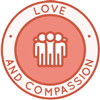
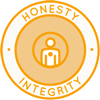
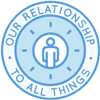
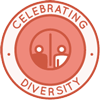
SHARE
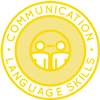
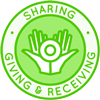

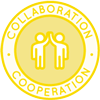
PLAY
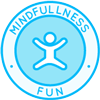
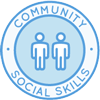
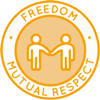
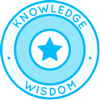
OPEN SOURCE TEACHING METHODOLOGY SUMMARIES
Montessori | Waldorf | Orff | Reggio | Multi-Intelligence | Bloom's Taxonomy | Study Tech | I-WE
INDEX OF ALL THE ONE COMMUNITY OPEN SOURCE LESSON PLANS
THE WORLD'S LARGEST ONLINE FREE EDUCATION RESOURCE ARCHIVE
RELATED CONTENT AND OTHER RELATED RESOURCES
We're building this resource section. Click here if you have a suggestion or resource for this page.
WHO WE ARE
MAIN OPEN SOURCE HUBS
EDUCATION COMPONENTS
CURRICULUM OUTLINES
- Core Curriculum
- Collaboration and Cooperation
- Communication and Language Skills
- Community, Family, and Social Skills
- Contribution, Global Perspectives, & Social Science
- Diversity, Differences, and Similarities
- Freedom and Celebrating Other Perspectives
- Honesty and Integrity
- Interconnectedness & Our Relationship to All Things
- Knowledge and Wisdom
- Love, Connection, and Compassion
- Mindfulness and Fun
- Sharing, Giving, and Receiving
LESSON PLANS
- Lesson Plans How-to
- Beliefs Lesson Plan
- Caring and Kindness Lesson Plan
- Civilization Lesson Plan
- Cognition Lesson Plan
- Communication Lesson Plan
- Consciousness Lesson Plan
- Content and “Our Inner World” Lesson Plan
- Contribution Lesson Plan
- Cooperation and Collaboration Lesson Plan
- Cosmos Lesson Plan
- Courage Lesson Plan
- Creativity Lesson Plan
- Diversity Lesson Plan
- Dreams Lesson Plan
- Emotional States Lesson Plan
- Energy Lesson Plan
- Fall Lesson Plan
- Form and “Our Outer World” Lesson Plan
- Freedom Lesson Plan
- Happiness Lesson Plan
- Harmony Lesson Plan
- Highest Good Lesson Plan
- Honesty and Integrity Lesson Plan
- Human Body Lesson Plan
- Humility Lesson Plan
- Individuality Lesson Plan
- Information Lesson Plan
- Matter & Materials Lesson Plan
- Movement and Development Lesson Plan
- Nature Lesson Plan
- Open Source Lesson Plan
- Opposites Lesson Plan
- Outer Space Lesson Plan
- Personal Growth Lesson Plan
- Planet Earth Lesson Plan
- Quality and Quantity Lesson Plan
- Reality Lesson Plan
- Recreation and Relaxation Lesson Plan
- Relative & Dimensional Space Lesson Plan
- Sharing Lesson Plan
- Signs and Symbols Lesson Plan
- Social Relationships Lesson Plan
- Spring Lesson Plan
- Summer Lesson Plan
- Time Lesson Plan
- Winter Lesson Plan
- Work Lesson Plan
 One Community
One Community


